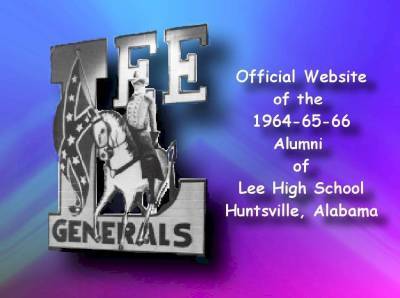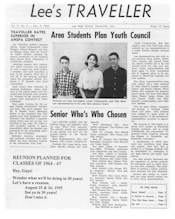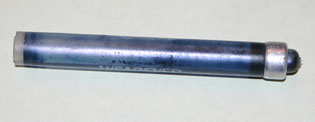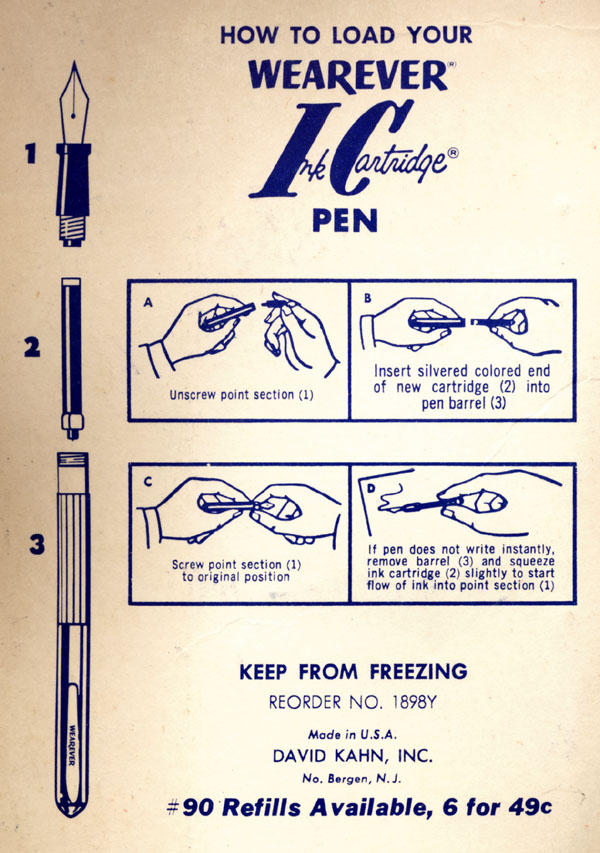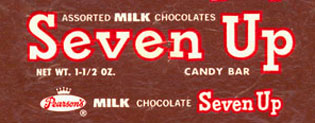Jeff Fussell, Class of '66 - Before the more notable compatibility dustups such as Beta vs. VHS and HD-DVD vs. BluRay, there was the ink cartridge shootout – one of which is the subject of this week’s mystery photo.
The iron-fisted law of Palmer Method handwriting declared the fountain pen an article of faith and the only true penmanship tool. The ballpoint was heresy. Refilling a student-grade fountain pen was messy at best. Once full, they often leaked like a British sports car. But, it didn’t matter what brand of ink mom brought home from the grocery. As long as it was blue-black, ink was ink.
Schaeffer and Scripto changed all that with their relatively cheap cartridge fountain pens. My choice was a Schaeffer. It used a “Skrip” (not “Scripto”, mom!) cartridge that worked just fine no matter which end was inserted into the pen. The competing Scripto model (in the picture) was longer and had a metal seating ring that only went one way. Both did exactly the same thing -- one no better than the other. The hair in the butter was that they were completely incompatible. Thankfully, the ballpoint gained some well-deserved respectability and… wait a minute – this isn’t a Cross refill!
______________________________
Bruce W. Fowler, Class of '66 - Most Illustrious Editor ORF, the object pictured is a fountain pen ink cartridge. During our formative years the sagging market in fountain pens moved the Parker and Schaeffer pen companies to introduce lines of inexpensive fountain pens with steel nibs that used these cartridges in lieu of the then conventional bladder and lever system. This innovation not only substantially reduced the cost of the pens but made them much neater for the gracefulness challenged to use since the standard of inks in those days was closer to archival quality rather than washable.
The fad had a measure of permanence. I can recall my relativity professor in graduate school using a Schaeffer cartridge fountain pen as his maths pen into the late '70's. This pen was identical to the ones we used and still sold for some nominal amount. Indeed, economically these pens were rather like the Gillette safety razor in that the money to be made was in selling cartridges. I recall that those of us who used them regularly scrounged a hypodermic syringe and needle to top off the cartridges several times before the gripping flange became too large to stay on the pen's nipple. That, of course, was in a simpler day although I do recall my relativity professor doing the same thing.
Such cartridges are around still and come in two sizes, small or international, the standard in Europe, and the larger size popularized by the Parker company. The problem with the cartridges in the educational environment was that one had to carry an extra cartridge which had to be intact to keep ink from seeping out - again, this was in the days when inks were neither washable nor archival.
The alternative to this was the refillable pen, using a rubber or latex bladder and a lever or later and common today, a piston feed system developed in Germany. That was what I settled on once I had a "real" job halfway through graduate school and today my maths pen is a Pelikan M-800 with an oblique medium nib that I use either Noodler's archival grade or Private Reserve Fast Drying inks in.
______________________________






